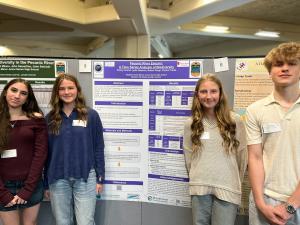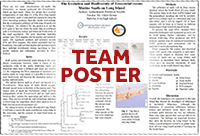

- Program:
- Barcode Long Island
- Year:
- 2024-25
- Research Topic:
- Biodiversity & trade
- Taxonomic Group Studied:
- Animals: Invertebrate
Project:
Peconic Barcode Campaign
- Students:
- Robert Drago, Payton Friede, Lydia Deptuch, Hailey Conrad
- School:
- Eastport South Manor Junior-Senior High School, Suffolk
- Mentors:
- Robert Bolen
Abstract:
We will conduct a study in the Peconic Bay Estuary to assess its biodiversity. We will collect organisms such as leeches, dragonfly larvae, water beetles, water spiders, and arthropods. We will compare the genes of these species to known ones to measure biodiversity. PCR and DNA electrophoresis will be used to amplify the CO1 gene, a common mitochondrial marker found in most species. This gene will be used to generate DNA barcodes and will enable us to accurately identify species and assess the biodiversity and health of the Peconic estuary. We are interested in this topic because anthropogenic impacts, particularly nutrient pollution, can threaten the estuary’s biodiversity. Excess nitrates and phosphorus from runoff, fertilizers, and pesticides are harming the ecosystem. Our aim in this experiment will be to cross-reference genetic sequencing barcodes to preexisting data to further assess the species and inhabitants of the estuary, determine the extent of anthropogenic impacts, and

